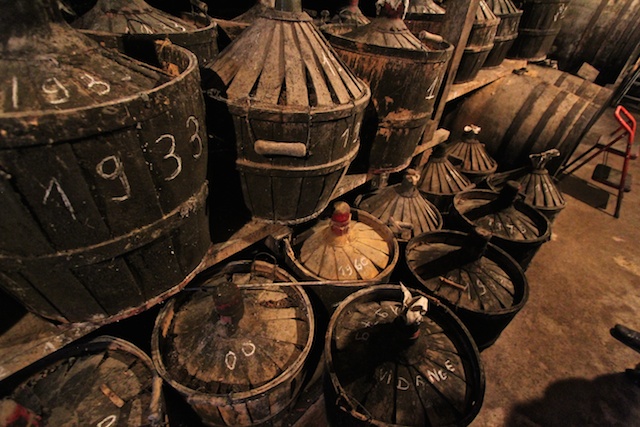Armagnac Preview #2 — Baraillon

We've been carrying the Baraillon Armagnacs for three years now and it's been a match made in heaven for K&L, the Claverie family, and our customers—we're their biggest account and their biggest fans. There's something special about walking into the tasting room at Baraillon, which is really just a little hut next to their home with plastic furniture and humble offerings (like fresh fois gros straight from the farm next door). Mr. Baraillon will come in from feeding the pigs wearing rubber boots, while his daughter Laurence stands by quietly, yet does most of the talking. It's as "real" of a rustic French experience as I think exists, in that there's absolutely no romantic marketing or salesmanship going on in the room. You're simply stopping by a small farm in the Bas-Armagnac that sells meat, preserves, and also happens to have a little reserve Armagnac in the chai outside—some amazingly-delicious Armagnac, no less.

We've brought in several expressions from Baraillon over the last few years: the heralded, customer-favorite 1985 vintage, a simple 10 year expression, a lovely 1998 Folle Blanche vintage, and a trio of super-old, ultra-rare gems from 1893, 1900, and 1933. Tasting through the line-up at Baraillon is not only incredibly-exciting, it's also exhausting! There are so many different expressions available, many of which have been archived in glass demi-johns to prevent further maturation. The Claverie vineyards are divided evenly between baco, folle blanche, and ugni blanc, so there is also the opportunity to taste single varietal Armagnacs versus blends of the three grapes together. As far as I know, the Claveries only distill folle blanche as a single varietal; although there are some 100% baco distillates from past generations in their chai.
While normally we taste from samples out of bottles, pulled by by Laurance in advance of our appointment, this year we decided we wanted to bottle a single cask selection. We headed with our glasses into the warehouse where Laurence dipped the rubberhose into the casks and got the booze a flowin'. We walked out with a killer barrel of single varietal Folle Blanche from 1995 that should make fans of the genre very, very happy. On top of that we picked out a straight 20 year marriage and a few other vintage selections that show the breadth and scope of the Baraillon Armagnacs.
Unlike distilleries that operate day in and day out, perfecting the distillation process in order to improve consistency, the Claveries are not worried about consistency. They only distill one week out of the year, so each batch reflects not only the vintage of the grapes, but the conditions on the farm at that particularly time. You have to remember—the Claveries have been living in the same house since 1749. They use fruit from around their property, but also from Mr. Claverie's sister in Le Freche. They do not use new oak, but rather 5,000 liter, used-vats that house the brandy until other barrel space opens up, or until they can afford to buy more wood. It's not about consistency at Baraillon, but rather what's possible at that particular moment in time (which each vintage represents). Sometimes the barrels from a vintage are blended together, sometimes they're not. It all depends on what's needed.
And that's why we feel the Baraillon Armagnacs are the most "authentic" spirit we carry; they reflect the everyday issues of everyday people attempting to make something great with their own two-hands.
-David Driscoll
